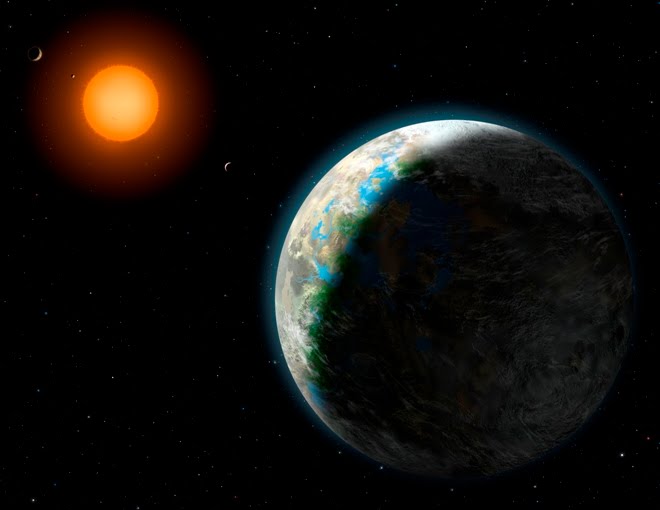Astronomy in 2012: Watch a Planet Transit With Your Own Eyes!
If you’ve been following the exploits of NASA’s Kepler spacecraft, you probably already know that the mission finds new planets using what’s called the transit method.
In short, Kepler stares at a bunch of stars and records when there’s a periodic dip in a star’s light caused by an object passing in front. With enough data and some careful followup work, scientists can tell whether the passing object is a planet orbiting the star.
So far, Kepler has confirmed 15 new planets using transits, and an additional 1,200 planetary candidates were recently announced. Next year, people around the world will be able to watch a transit of an Earth-size planet with their own eyes.
OK, fine, I admit—the planet in question is our own Venus. But that’s still pretty cool, because Venus transits are exceedingly rare.
Video of 2004 Venus transit, as seen by NASA’s GOES satellite.
The next one will happen in June 2012, and it’ll be visible from only certain parts of the globe (click map below for full screen view).

[UPDATE: For people on the Americas able to see the transit, you'll be looking in the evening hours of June 5. Viewers in Europe, Africa, Asia, and Australia will be watching the morning of June 6. Sky-watchers who want to see the whole transit from start to finish need to be in eastern Australia, New Zealand, New Guinea, the Philippines, China, Korea, Japan, the western Pacific islands, Hawaii, Russia, Alaska, and northwest Canada.]
When it ends, there won’t be another Venus transit until 2117.
What follows is an edited transcript of a conversation I had last week with National Geographic grantee Jay Pasachoff, an astronomer at Williams College in Massachusetts and an expert on eclipses and transits.
So what does a Venus transit look like from Earth?
The great [German] astronomer Johannes Kepler in the 17th century predicted that there’d be a transit of Venus in 1631, but nobody had any idea at the time how big Venus would look, because they didn’t know how big it was or how far it was away. In fact, the transit in 1631 wasn’t visible from Europe, and we didn’t have telescopes at that time in California, so it took until 1639 before anybody saw a transit of Venus. When it was seen, it was just a huge surprise that there was a black dot about 1/30 the diameter of the sun that moved across the surface of the sun.
Venus can look about the same size as a big sunspot, but it looks perfectly round and regular, whereas a sunspot has dark inner regions and lighter outer regions, the umbra and penumbra. In fact, one can also see transits of Mercury across the face of sun. But Mercury is both smaller than Venus and farther away from Earth—it’s only 1/30 the area of Venus—and it looks less impressive, unless you’re looking with a really good telescope or spacecraft.
When I saw a transit of Venus in 2004, I used my 500mm telephoto lens to take pictures that show a beautiful black dot, whereas in 2006 we went to Hawaii to observe a transit of Mercury, and when I took a picture with the same lens, the dot of Mercury was barely visible and was much smaller than a sunspot that was on the sun at the time.
Why study Venus transits?
In the original studies, Edmond Halley [of Halley's comet fame] figured out a way of calculating how far the sun is away from Earth, and therefore how big the solar system is, by studying a transit of Venus. Measuring the size of the solar system used to be the most important activity in astronomy in the 18th and 19th centuries, so hundreds of expeditions went all over the world to make observations of Venus transits.
[Editor's note: Capt. James Cook was funded by England's Royal Society to sail to Tahiti and observe a Venus transit in 1769, collecting valuable data for astronomers back home, who were not in the viewing path. The 2012 transit will also be visible in the South Pacific, and travel agencies are already pitching trips to Tahiti's black-sand beaches to "follow in Cook's footsteps" during the celestial event ... I think a field trip is in order!]






No comments:
Post a Comment